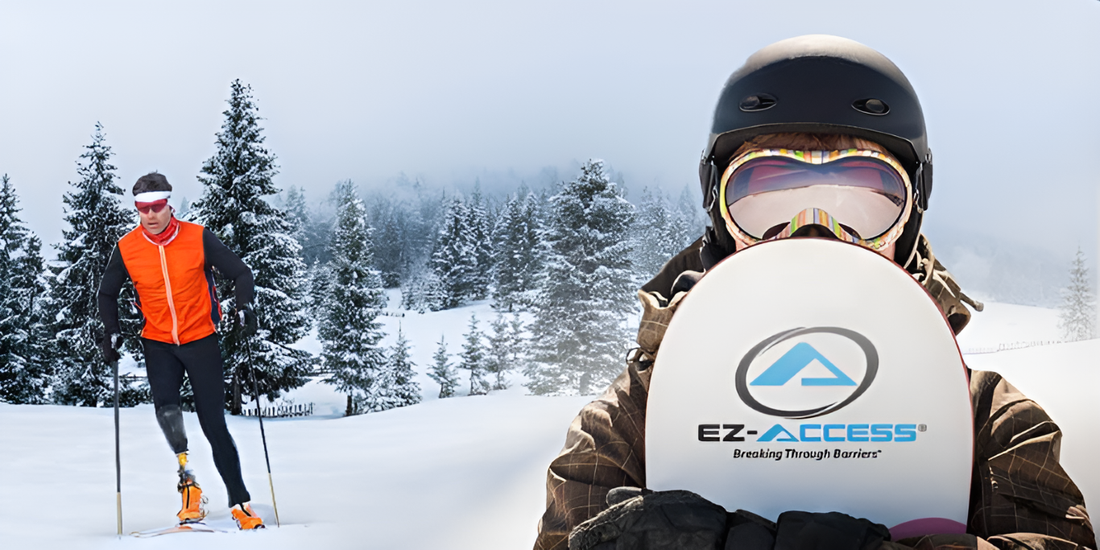There will always be a debate around the topic of winter
Some wait all year long for white crystals to turn their city into a winter wonderland, while others dread below-freezing temperatures. However, one thing will always be certain: it’s easy to go stir-crazy avoiding the cold. Especially for individuals who use wheelchairs or other assistive technology, as there are limited options for safe activity.
Here are a few ways winter facilities can adapt to include recreational options for individuals using assistive technology.

Adaptive Skiing & Snowboarding
Individuals with just about any physical disability have the ability to snow ski or snowboard. With the sport’s latest technology, individuals have the choice to mono-ski, bi-ski, dual ski, tandem/piloted ski, or go cross country Nordic.
If a winter resort wants to offer adaptive snow sports to its recreational facilities, the following solutions should be included:
- Elevators for multi-level lodges
- Durable and safe wheelchair ramps at multiple entrances
- An adequate number of accessible parking stalls
- Appropriate snow ramps for sit skiers

Ice Skating
Many families enjoy ice skating together every winter, but if they have relatives in wheelchairs, this often feels unattainable. However, wheelchairs glide on the ice just like skates! There are three options for accompanying an individual who uses a wheelchair on ice.
Let the individual be independent. If an individual usually moves on their own in a wheelchair and prefers to, there is no need for assistance.
Or an experienced skater can guide the wheelchair as the family has fun.
The last option involves using shoe grips to walk around on the ice as a family member or friend guides the wheelchair.
There are two essential things facilities should consider for accessibility: wide entrances to the ice rinks and easy access to the rink platform. Oftentimes rinks are outdoor pop-ups for the winter, and if that’s the case, then a simple solution for platform access is a custom modular ramp system like the PATHWAY® HD!

Adaptive Skating
If an individual does not require a wheelchair for assistance and would prefer to be on skates, there are additional measures an ice skating rink can take. Some rinks offer specific times of the day dedicated to adaptive skating, while others integrate ice skating and adaptive skating throughout all open hours. In order to provide individuals with mobility challenges the best experience, here are a few things a rink should offer:
Adaptive ice skates that can accommodate wider feet or orthotics
Walkers to aid stability and balance
Ice sleds for participants with paralysis
Helmets to protect the head in case of a fall

Sled (or Sledge) Hockey
According to USA Hockey, Sled Hockey “was invented at a Stockholm, Sweden, rehabilitation center in the early 1960s by a group of Swedes who, despite their physical disability, wanted to continue playing hockey.”
Sled hockey rules are the same but require different equipment. Players sit on sleds designed specifically for users with lower body paralysis or disability, that are fixed on two hockey skate blades. Players hold two sticks, rather than one, with metal picks at the end to allow them to propel themselves forward.
In order for facilities to allow sled hockey games to take place, the following updates need to occur:
A bench area flush with the ice
Clear plexiglass replacing the whiteboards around the bench area
Whether a facility is year-round or only open during the winter months, these are just a few ways to ensure every individual has access to the fun!
If you’re unsure about wheelchair accessibility at a location, feel free to reach out to us for assistance with custom ramps and stair systems!

